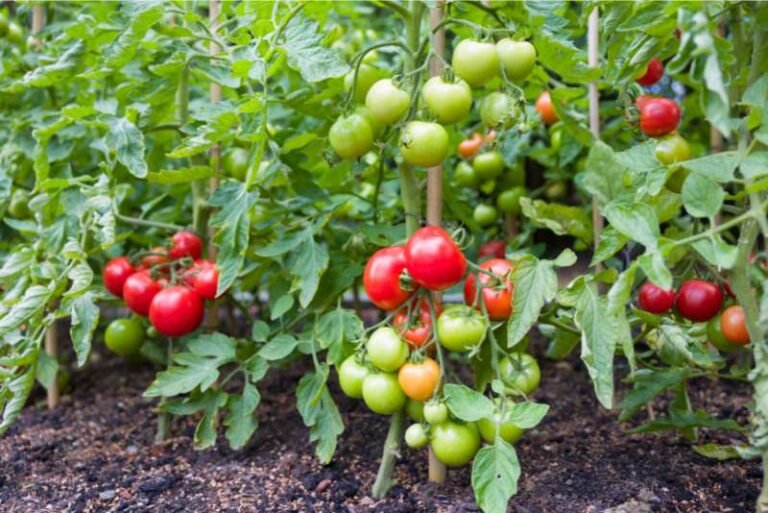How to Grow Keystone Resistant Giant Pepper?
Growing your own vegetables is an incredibly rewarding experience, and the keystone resistant giant pepper is no exception. As a delicious and versatile addition to your garden, these large peppers can be used in a wide range of recipes. In this article, we’ll walk you through the process of growing and harvesting keystone resistant giant pepper, covering everything from planting the seeds to enjoying the fruits of your labor.
What is a Keystone Resistant Giant Pepper?
The keystone resistant giant pepper, also known as the keystone giant bell pepper or keystone giant pepper, is a large and flavorful variety of bell pepper. This giant pepper is known for its resistance to common diseases, making it an excellent choice for home gardeners. The keystone pepper plant can grow quite tall, with some plants reaching heights of over 2 feet. These sweet green keystone peppers are frost tolerant and can produce some of the largest bell peppers you’ve ever seen.
Keystone Pepper Plant Size Chart
The size of a keystone giant pepper plant can vary depending on factors like growing conditions and care. To give you an idea of what to expect, here is a pepper plant size chart for the keystone pepper plant:
- Seedling stage: 2-4 inches tall
- Vegetative stage: 1-2 feet tall
- Flowering stage: 2-3 feet tall
- Fruit-bearing stage: 2-4 feet tall
Getting Started Planting Seeds
To grow your keystone resistant giant pepper plants, start by planting the seeds indoors about 8-10 weeks before the last expected frost date. Fill seed trays or small pots with a high-quality seed-starting mix, and plant the seeds about ¼ inch deep. Keep the soil moist and maintain a temperature of around 70°F to 80°F to ensure proper germination. Once the seedlings have developed their first true leaves, transplant them into larger pots.
Proper Care for Your Keystone Pepper Plant
When the threat of frost has passed, and the seedlings are at least 6-8 inches tall, transplant your keystone pepper plants outdoors. Choose a sunny spot with well-draining soil, and space the plants about 18-24 inches apart. Make sure to keep the soil consistently moist, but not waterlogged. Fertilize your plants regularly using a balanced fertilizer, and provide support with stakes or cages as they grow.
Pollinating Bell Peppers
While bell peppers are self-pollinating, sometimes they need a little help. To ensure a bountiful harvest, gently shake your plants or use a small paintbrush to transfer pollen from one flower to another. This process will help to increase the chances of successful pollination and result in more large peppers on your keystone resistant giant sweet pepper plants.
Harvesting Your Giant Bell Peppers
Your keystone resistant giant bell peppers will be ready for harvest when they reach the desired size and color, typically around 75-90 days after transplanting. The giant bell pepper size chart can give you an idea of when your peppers are fully mature:
- Small: 2-3 inches in diameter
- Medium: 3-4 inches in diameter
- Large: 4-5 inches in diameter
- Giant: 5+ inches in diameter
To harvest your keystone bell peppers, use a sharp pair of garden shears or a knife to cut the pepper from the plant, leaving a small portion of the stem attached. Be gentle to avoid damaging the plant, which will continue to produce more peppers throughout the season.
Final Thought
Growing keystone resistant giant bell peppers is a rewarding process that results in a bountiful harvest of large, delicious peppers. By starting with the right seeds, providing proper care, and ensuring successful pollination, you’ll soon be enjoying these versatile peppers in a variety of dishes. With patience and attention to detail, you’ll become a master at growing and harvesting these impressive keystone bell peppers, adding a vibrant and tasty element to your garden and your table.
Let’s Have a Quick Overview – Frequently Asked Questions
What is a gypsy pepper?
A gypsy pepper is a type of sweet, hybrid bell pepper known for its thin walls and tapered shape. They typically change color from pale yellow to orange or red as they mature.
How do you grow Yolo peppers?
Yolo peppers, also known as Yolo Wonder bell peppers, can be grown similarly to other bell pepper varieties. Start seeds indoors, transplant seedlings after the risk of frost has passed, and provide a sunny location with well-draining soil and regular watering.
What is the biggest bell pepper?
The biggest bell pepper is the keystone resistant giant bell pepper, which can grow up to 5 inches in diameter or even larger under ideal conditions.
How tall do keystone giant peppers grow?
Keystone giant pepper plants can grow up to 2-4 feet tall, depending on the growing conditions and care provided.
What is the size of a keystone giant pepper?
The size of a keystone giant pepper can vary, but they typically measure between 4-5 inches in diameter or even larger when fully mature.







